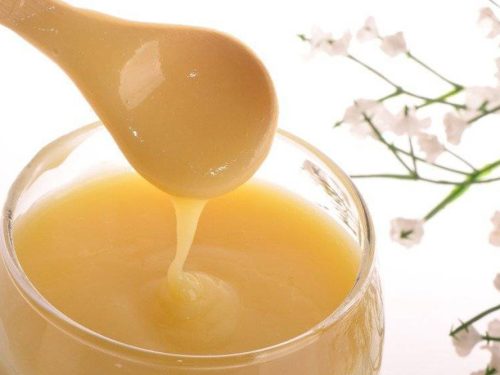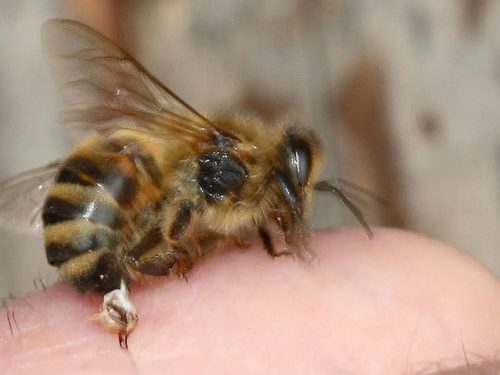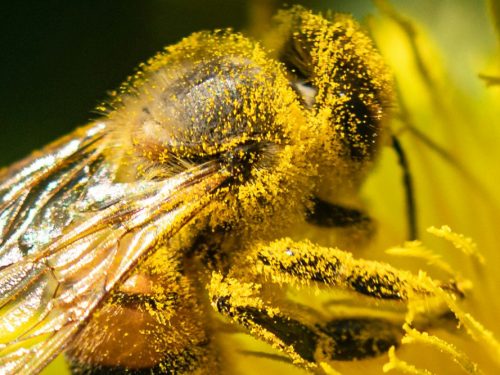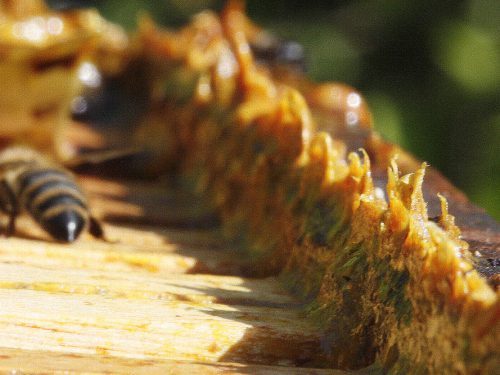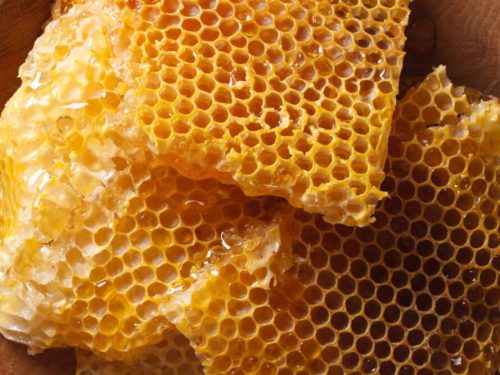
Ni jedan sastojak u prirodi nije obuzimao tokom istorije ljudsku pažnju i znatiželju kao med. Mnogi stari narodi koristili su ga i obožavali. Znan je još u starom Vavilonu gde se koristio u obredne svrhe, poznavali su ga i drevni Egipćanji koji su ga koristili u svrhu balsamovanja, čuvanja hrane ali i kao afrodizijak i lek za opekotine. Aleksandar Makedonski sa svojom vojskom ne bi kretao u osvajačke pohode da njegova vojska pre toga ne ponese velike količine meda koji je davao neophodnu snagu i izdržljivost nepobedivoj vojsci.
Antički Grci a kasnije i Rimljani bili su u potpunosti svesni svih hranljivih i lekovitih svojstava meda i koristili su ga kao lek za mnoga obolenja. Pored ovih antičkih naroda med je bio hrana i lekovito sresdtvo i za mnoge narode kao što su bili Vizigoti, Gali, stari Sloveni. Oni nisu uzgajali pčele ali su ovaj božanstveni proizvod obilato koristili. Med je i tokom srednjeg veka obilato korišćen kada su pčele masnovnije po prvi put uzgajane najčešće u okviru manastira. Tragove o korišćenju meda u najrazličitije svetovene i religiske svrhe možemo naći u mnogim književnim i crkvenim delima iz toga doba. Za med nisu samo znali stari narodi na teritoriji Evrope i Bliskog Istoka već i drevni Kinezi koji su ga koristili u tradicionalknoj medicini kao lek za opekotine, bolesti pluća ali i za probavu. Čak su i Maje, Inke koristili med u obredne svrhe i za pravljenje osvežavajućih napitaka i melema. Neki stari narodi znali su da med ne propušta kroz sebe mikrobe te su u nedostatku frižidera isti koristili kako bi meso čuvali mesecima u svežem stanju.
I sve do današnjih dana ljudi se slade medom, ali je on odavno postao i značajno sredstvo u farmaceutskoj indusrtriji – par reči o tome kasnije. Po svojoj prirodi med je slatka sirupasta materija veće gustine od vode, od skoro prozirne beličaste tj. svetlo žute do braon boje, sa ili bez primesa zelene ili crvene. Boja i ukus meda zavisi od nektara sa kojeg su pčele skupljale med. Svaka pčela radilica deo svoga života posveti skupljanju nektara sa cvetova ili smola i drugih biljnih sokova. Pošto napuni voljku ona, dok leti do košnice, nektar oplemenjuje enzimima a zatim ga odlaže u male voštane kućice – saće. Mlade pčele nastavljaju da prerađuju nektar koji vremenom sazreva i pretvara se u med. Na kraju procesa pčele voskom zatvaraju voštanu šestougaonu kućicu u kojoj se nalazi zreo med i time skladište hranu za hladnije dane. Da bi sakupile 1 kg meda pčelama treba oko milion poseta cvetovima.
Hemijski sastav meda je fascinantna mešavina skoro 80 sastojaka. Najveći udeo u sastavu meda imaju šećeri te tako fruktoze ima oko 35 – 38%, glukoze oko 27 – do 33 %, a složenog šećera saharoze samo oko 8 – 11%. U zavisnosti od odnosa fruktoze i glukoze medovi različitim tempom kristališu te tako npr. bagremov jako sporo kristališe a npr. med od uljane repice kristališe jako brzo. Kada smo kod kristalizacije, samo prirodni med ima sposobnost kristalizacije i to ga razlikuje od falsifikata. U mnogim zemljama med se prodaje samo u ukristalisanom obliku. Od ostalih elemenata sadrži vodu 15 – 23%, mnoge kiseline (limunska, sirćetna, mlečna, jabukova, metanska…) i aminokiseline, vitamine B grupe, vitamin E, brojne minerale i enzime. Normalno je da se u medu nađe i primesa pepela, voska i polena. Što se njegove hranjive vrednosti tiče 100g istog ima oko 1300kJ ili 330 kcal što ga čini izuzetno pogodnim za decu, starije osobe i sportiste. Zbog male primese saharoze med je u malim količinama pogodan i za dijabetičare.
Medovi se mogu podeliti na osnovu nekoliko kriterijuma. Najčešće ih delimo na sortne (monoflorne) i mešane (poliflorne), ili na cvetne (dobijaju se od nektara) i medljikovac (dobija se od smola i sokova drugog bilja) itd… Najpoznatije sorte medova kod nas su bagremov, lipov, kestenov, suncokretov, livadski, šumski a u svetu su cenjeni med od akacije i cvetova egzotičnog bilja.
Danas se med koristi u ishrani ali i u farmaciji. Sam ili združen s drugim preparatima (npr. limunom, renom, propolisom, polenom itd.) ili napitcima med ima izuzetno povoljno dejstvo na mnoge organe u organizmu te je tako odličan kao preventivno sredstvo ili dodano lekovito sredstvo kod upala pluća, astme, bronhitisa, upale grla, problema sa želucem, oteklina i opekotina i … Blagotvorno dejstvo meda na bolje funkcionisanje organizma je dokazano i ono je izuzetno a o njegovim prednostima u ljudskoj ishrani mogli bi da posvetimo jednu posebnu knjigu.
Da bi smo moli i u budućnosti da uživamo u ovoj prirodnoj poslastici moraćemo više da se potrudimo da čuvamo i očuvamo gospođu pčelu, koja je pored svega jedno krhko i izuzetno stvorenje.

